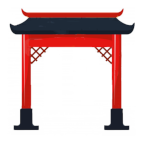| ||||||||
| 姑 |
|
 Hanzi-Trainer |
||||||
| ||||||||
의미
paternal aunt, husband's sister, husband's mother (old) | ||||||||
발음
|
gū | |||||||
설명 |
왼쪽: 여인 女, 오른쪽: 늙을 古 (원래 해골이지만 묘비의 그림문자로 더 좋음) Left: woman 女, right: old 古 (originally a skull, but better the image of a tomb stone) | |||||||
|
늙은 여자는 부친의 고모입니다. The woman who is old, is the paternal aunt. | |||||||
- 출력되지 않습니다!!!!래디컬
| ||||||||
어휘
| ||||||||
|
문자 목록 | 래디컬 목록 | ||||||||
|
